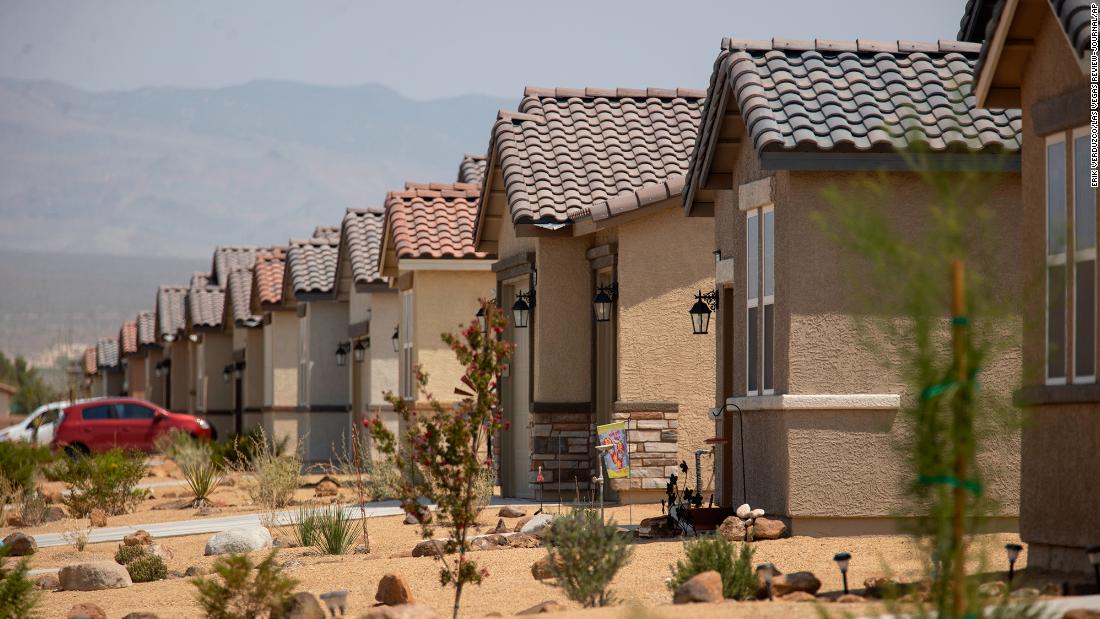U.S. house values fell for the first time since 2012, Zillow says. Sellers and buyers are facing a very different housing market to 2020
The housing market isn’t crashing, but it’s definitely feeling the burn.
After two frenzied years, home buying is cooling off as mortgage rates rise. Some experts in the field are calling it a “housing recession.”
U.S. home values fell in July by 0.1%, compared to the month before, a new Zillow report said.
While deceleration in home-price growth is typical for this time of the year, Zillow noted, the small decline is the first monthly dip since 2012.
The typical U.S. home value fell by $366 in July, and is now $357,107, as measured by the Zillow Home Value Index.
“The typical U.S. home value fell by $366 in July, and is now $357,170, as measured by the Zillow Home Value Index.”
Given the dip in July, Zillow revised its forecast for the growth in home values to 2.4% through the end of July 2023. The current rate of growth is 16%.
But this hardly counts as a crash in prices, because the typical home value is also up 44.5% from July 2019 before the COVID-19 pandemic.
At this point, sellers are finding themselves with fewer offers, and are having to offer more concessions themselves to entice buyers.
“ Sellers are finding themselves with fewer offers, and are having to offer more concessions themselves to entice buyers.”
Buyers in turn are gaining more options, seeing inventory gradually rise, as the pendulum slowly swings into their direction.
The dip in July is a “badly needed rebalancing that gives home buyers more options, more time to shop and more negotiating power,” Skylar Olsen, chief economist at Zillow
Z,
said in a statement.
Homes have become unaffordable for many, given the high prices and mortgage rates. “As prices soften, many will renew their interest, and we will continue our progress back to ‘normal’,” Olsen added.
Home value declines were largest in San Jose, Calif., San Francisco, Calif., Phoenix, Ariz., and Austin, Texas. In these markets, the time listings spend on the market is rising fast.
“‘Our prices have come off of their irrational highs of the last 18 months. It’s kind of a rebalancing.’”
“Our prices have come off of their irrational highs of the last 18 months. It’s kind of a rebalancing,” Dave Walsh, vice president and manager of Compass Realty San Jose, told MarketWatch.
Instead of homes listed on the market getting multiple offers, there are maybe one or two offers per home. “From your buyer’s point of view, there’s a much better opportunity for them to get something at a much more affordable price,” he added.
At open houses in the Bay Area, multiple buyers are turning up — but the lines are nowhere near as long as they were during the pandemic years. “That was just off the tracks,” Walsh, a four-decade housing-industry veteran, said. “We’ve never had a year like 2020 in many of my years in being in the business.”
Home values rose the most in Miami, Fla., Richmond, Va., and Memphis, Tenn. But monthly growth has decelerated as well in these markets, Zillow noted.
Here’s the top 10 market movers:
| City | July Zillow Home Value Index | Zillow Index change from June to July | Share of listings with a price cut |
| San Jose, Calif. | $1.56 million | -4.5% | 19.5% |
| Phoenix, Ariz. | $470,800 | -2.8% | 28.8% |
| San Francisco, Calif. | $1.44 million | -2.8% | 17.5% |
| Austin, Texas | $566,533 | -2.7% | 25.2% |
| Raleigh, N.C. | $457,006 | -2.5% | 19.7% |
| Sacramento, Calif. | $611,287 | -2.5% | 23.6% |
| Riverside, Calif. | $580,593 | -2.4% | 23% |
| Denver, Colo. | $630,141 | -1.8% | 26.3% |
| Portland, Ore. | $573,768 | -1.7% | 23.5% |
| Las Vegas, Nev. | $450,931 | -1.4% | 28.6% |
Got thoughts on the housing market? Write to MarketWatch reporter Aarthi Swaminathan at aarthi@marketwatch.com


